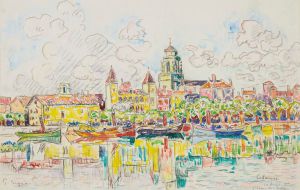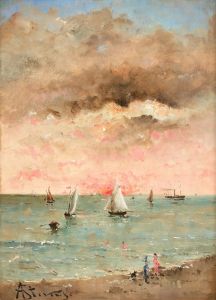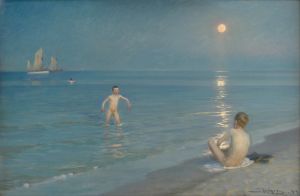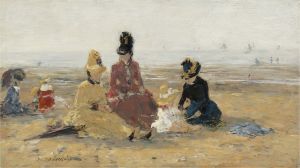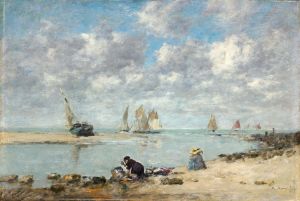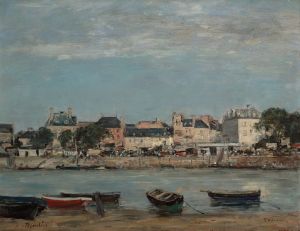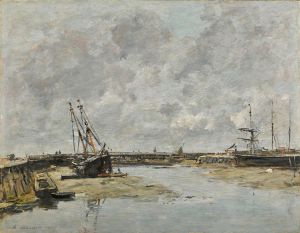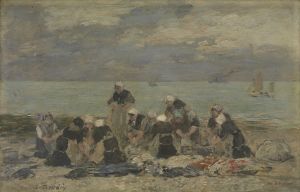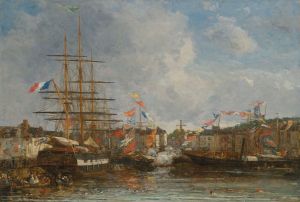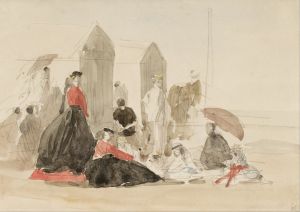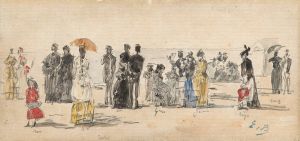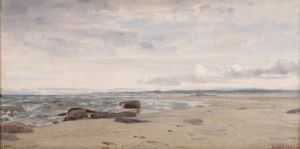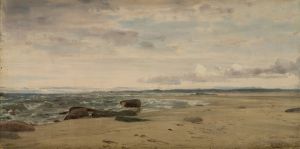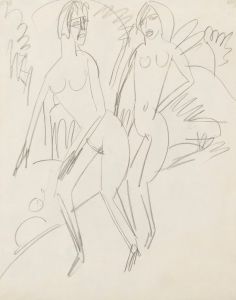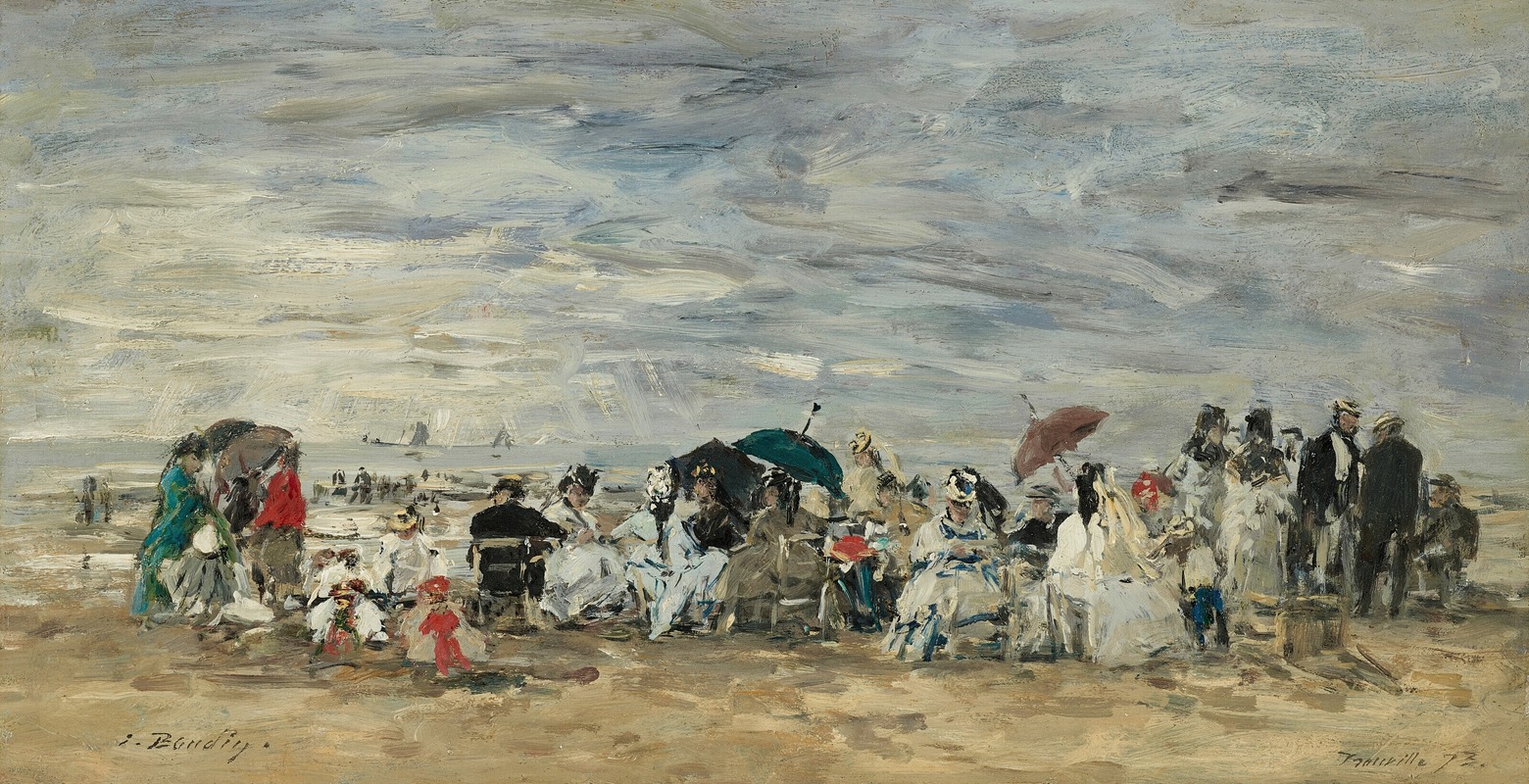
Trouville, Scène de plage
A hand-painted replica of Eugène Boudin’s masterpiece Trouville, Scène de plage, meticulously crafted by professional artists to capture the true essence of the original. Each piece is created with museum-quality canvas and rare mineral pigments, carefully painted by experienced artists with delicate brushstrokes and rich, layered colors to perfectly recreate the texture of the original artwork. Unlike machine-printed reproductions, this hand-painted version brings the painting to life, infused with the artist’s emotions and skill in every stroke. Whether for personal collection or home decoration, it instantly elevates the artistic atmosphere of any space.
Trouville, Scène de plage is a painting by the French artist Eugène Boudin, who is widely regarded as one of the precursors of Impressionism. The artwork depicts a beach scene in Trouville-sur-Mer, a coastal town in Normandy, France. Boudin, known for his mastery in capturing the effects of light and atmosphere, frequently painted seaside landscapes and beach scenes, making Trouville one of his favored subjects.
The painting showcases Boudin's characteristic style, with a focus on natural light, open skies, and the leisurely activities of people by the sea. It portrays a group of figures, likely vacationers, dressed in 19th-century attire, engaging in various activities on the beach. The composition highlights the interplay between the figures, the sandy shore, and the expansive sky, which occupies a significant portion of the canvas. Boudin's use of loose, fluid brushstrokes and his attention to the changing effects of light and weather are evident in this work.
Trouville was a popular destination for the French bourgeoisie during the 19th century, especially after the advent of railways made travel more accessible. Boudin's frequent visits to Trouville allowed him to observe and document the social life of the time, particularly the emerging trend of seaside leisure. His paintings of Trouville, including Trouville, Scène de plage, are considered important records of this cultural phenomenon.
Eugène Boudin's work had a significant influence on the development of Impressionism. He was an early mentor to Claude Monet, encouraging the younger artist to paint en plein air (outdoors) and to focus on capturing transient effects of light and atmosphere. Boudin's dedication to painting directly from nature and his ability to convey the ephemeral qualities of the environment were pioneering for his time.
The exact date of Trouville, Scène de plage is not specified, but it is consistent with Boudin's body of work from the 1860s to the 1880s, a period during which he produced numerous beach scenes. The painting is part of a larger series of works that depict the beaches of Normandy, including those of Trouville and Deauville.
Today, Trouville, Scène de plage is recognized as an example of Boudin's contribution to the evolution of modern art. His ability to capture the beauty of ordinary moments and his innovative approach to landscape painting have earned him a lasting place in art history. The painting is housed in a public or private collection, though specific details about its current location may vary depending on exhibition arrangements.





